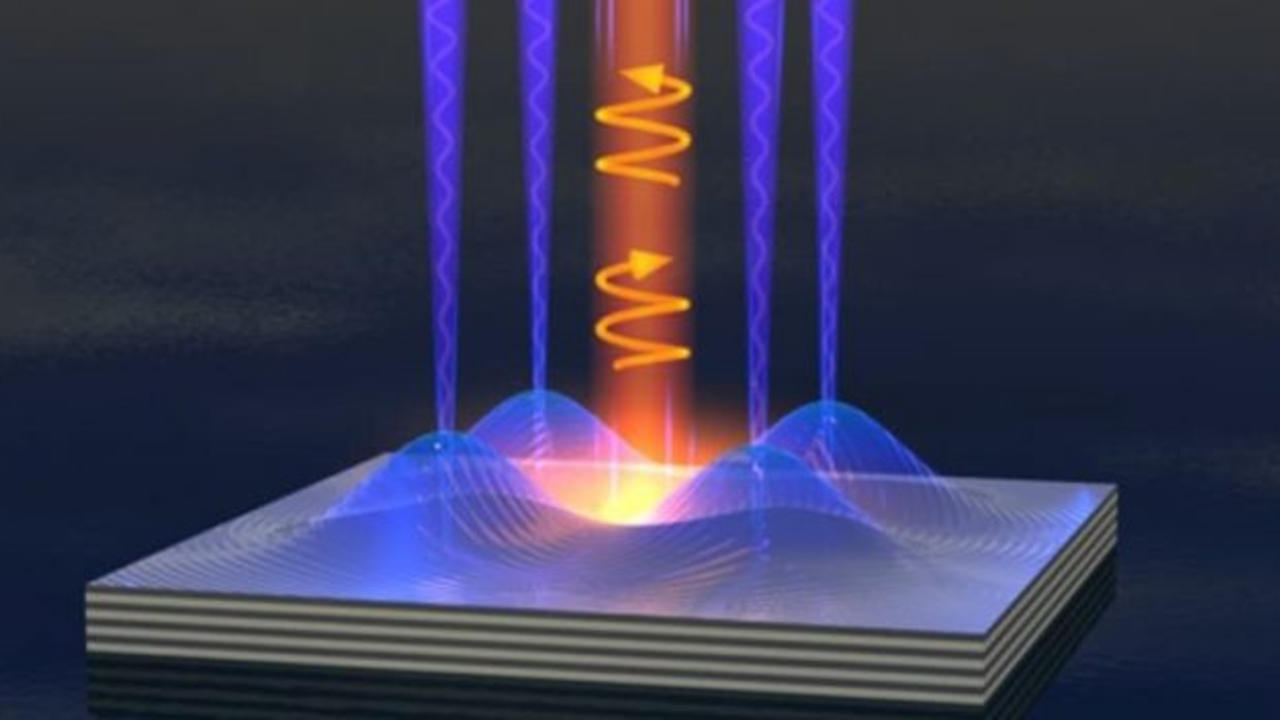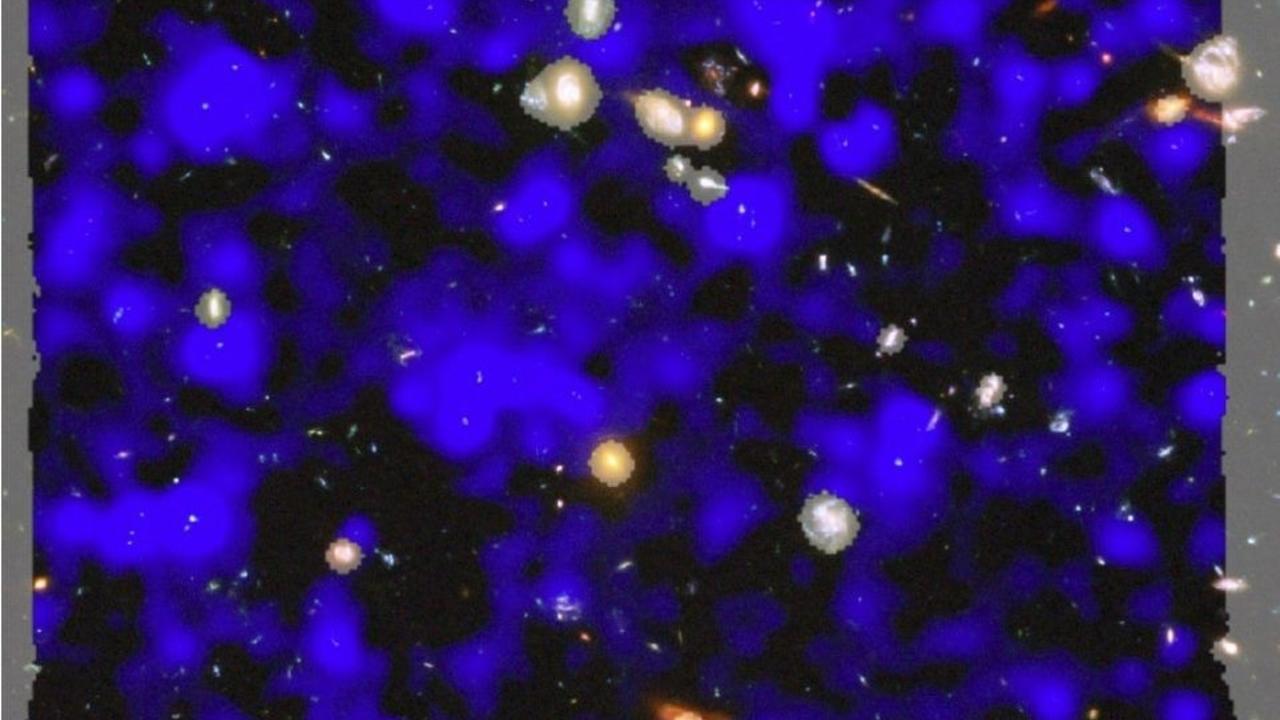Science News
& Faculty Articles
Black Holes… Black Suns?

By Dr. Inés Urdaneta / Physicist at Resonance Science Foundation
Image from ESA
Stars were thought to be the principal and most important component for life to thrive… till now. Researchers from Harvard university explain that radiation coming from Black holes could do the same!
Habitable zones in outer space have been defined with respect to stars (suns), as regions where the stars radiation and energy are suitable for emergence of life. Closer or farther away from this source of energy, temperature would be too cold or too hot in order for liquid water to exist in a planet´s surface. The zones were liquid water and biological opportunity can happen are known as “Goldilocks zone”.
A new study published in The Astrophysical Journal have found such zones around supermassive black holes as well. This is quite surprising, since the surroundings of a black hole, consisting on swirling disks of gas and dust called Active Galactic Nuclei -AGN-, emit...
A Tiny Galaxy With A Big Heart!

By Dr. Inés Urdaneta / Physicist at Resonance Science Foundation
Photo: Hubble image depicting galaxy ESO 495-21 at the center. From NASA/ESA
Evolution of our understanding of Black Holes (BH) has gone from the mathematical outcome with no physical counterpart, up to their detection at the center of various galaxies and visualization of their shadow through the reconstructed image presented for the first time just a few months ago by the EHT global initiative (https://resonancefdn.oldrsf.com/the-first-image-of-a-black-hole-is-finally-here/). Now it is thought that every galaxy hosts a BH in its core. When the first BHs were inferred from cosmological observations, we believed they were an extravagant exceptional behavior in the universe. Since, they have proven not so exceptional as they are detected with increased frequency, but they remain an extravagancy, and not for the same reasons.
ESO 495-21 is a galaxy just 3.000 light years across in diameter, very small compared to...
Fifth State of Matter confirmed!

By Dr. Inés Urdaneta / Physicist at Resonance Science Foundation
We are familiarized with the four states of matter acknowledged so far: solid, liquid, gas and plasma. Who would have imagined a fifth state of matter, containing simultaneously two states? Within the diversity of crystallization forms or phases of water, from liquid to solid ice (more than seventeen crystalline and several amorphous ice structure), new one has appeared: ionic oxygen crystal with, ionic hydrogen (mainly protons) moving inside, like a fluid. It has been named ice XVIII, and it is both a new phase of water (because it depends on applied temperature and pressure) and a new state of matter (because it gathers both a solid and a fluid).
Crystals are formed by ionized atoms, such that the electrostatic forces between cations and ions keep the lattice solid. The common salt crystal having anions of Chlorine (Cl-) and cations of Sodium (Na+), is in solid state at room temperature, but the...
Astronomy Accessible for People with Hearing Loss

By Dr. Inés Urdaneta / Physicist at Resonance Science Foundation
How does it looks like, how does it sounds like, how would it feel? We perceive our reality through our senses: sight, smell, touch, hearing, taste. We usually don’t include the sense of perceiving how it would feel to be someone else… the sense of empathy. Most of our education is focused on the standard view that everyone shares the same senses, hence, they perceive almost the same. But even if we had the same senses, do they perceive the same? Discrimination arrives when we disregard the differences by assuming we all do.
In the USA alone there are approximately 11 million people with serious hearing problems. It is estimated to be 360 million around the globe. Astronomers at the University of California, Riverside, Gillian Wilson and Mario De Leo-Winkler (now director of the National System of Researchers SNI of Mexico), have teamed with teachers at the California School for the Deaf, Riverside...
Spectral Signatures of a Black Hole Spinning at Almost the Speed of Light

By Dr. Inés Urdaneta / Physicist at Resonance Science Foundation
After a two years analysis on the emission spectra from a 2016 X-ray transient outburst in the black hole system U4 1630-47, obtained by three different independent space missions; Chandra/HEG, AstroSat and MAXI, the leader of the project Dr. Mayukh Pahari and collaborators could determine the spinning and mass of the BH. The estimated spinning rate is 92-95% the speed of light, with a mass of 5-10 M (million solar masses).
Fig 1 below shows the initial signals detected by the MAXI missions. These spectra are further analyzed, decomposed and fitted in order to obtain the final results published here.

Fig.1: 2016 X-ray outburst of 4U 1630–47 as observed by MAXI and Swift/BAT.
With the independent modeling of the broadband data spectra obtained by the three missions, and using the Markov chain Monte Carlo simulations on fitted spectral parameters, they find a range of the black hole spin parameter depicted...
Topological Materials: A New Dimension of Properties and Their Amazing Applications

By Dr. Inés Urdaneta / Physicist at Resonance Science Foundation
The word topology refers to the contours of a surface or the shape of an object. In mathematics, topology classifies objects by the number of holes they have. A ball is a sphere with no hole, whereas a doughnut, with its one hole, is topologically different. The ball is topologically equivalent to an apple, and a doughnut to a cup, but not to a ball or a pretzel, since going from one topology to another would require a dramatic change, like ripping a hole. For this reason, the topological states discovered in some materials are robust and resist disruptions, unless they are as dramatic as the one mentioned previously.
Topological materials provide certain electronic states that persist despite a modification to their physical shape. What’s important isn’t the shape itself but the structure of its electronic bands; regions of electronic energy distribution particular to each material. The electronic...
Liquid Light at Room Temperature!

By Dr. Inés Urdaneta / Physicist at Resonance Science Foundation
When we think about liquids, we think about one of the four known states of matter: gas, liquid, solid and plasma (charged or ionized gas). Light being mass-less, the words liquid and light put together seems at first like an oxymoron. But not so long ago, in 2013, a theorized similar situation predicted in 2007 and called “photonic molecule” was made artificially. In these experiments, photons – quantum of electromagnetic fields, which have no rest mass and travel at the speed of light in vacuum – bind together so strongly, they behave as molecules, and so acting as if they had mass.
Another case concerning light which reproduces the physics of molecules, consists of photons confined to two or more coupled micro-optical cavities, since it reproduces the behavior of interacting atomic energy levels. For this reason, it has also been termed photonic molecule, which is an alternative...
From Somewhere … To Everywhere!

By Dr. Inés Urdaneta / Physicist at Resonance Science Foundation
Atomic Hydrogen (H) – the first element in our periodic table – has made an unexpected and unprecedented apparition. A recent study by Lutz Wisotzki of the Leibniz Institute of Astrophysics in Potsdam with collaborators from different institutions reveals the presence of H all over the sky, including the apparently empty space between galaxies. This was concluded after detecting one of the traits that characterize the H element, part of the digital print of the atom, called the “spectrum.” We’re referring to the Lyman-alpha transition of atomic hydrogen at a wavelength of 121.6 nanometers.

(Ly-α in Figure 1), corresponding to a frequency of 2.47×1015 hertz.
The Lyman-alpha line is in the ultraviolet section of the electromagnetic spectrum. Because it is absorbed by air, its astronomical presence must be detected by satellite-borne instruments, unless the source is...
Where There is Black, There is White?

Image Via NASA/FQtQ Jolene Creighton
By Dr. Inés Urdaneta / Physicist at Resonance Science Foundation
This could be the first time you have heard about a white hole (WH). Meanwhile, we have been hearing for quite some time about “black holes” (BH) as regions in outer space where nothing — not even light — could escape. Such cosmological entities, roughly represented by a singularity or point of infinite energy/mass/information density and an event horizon defining the “size” of the BH, are increasingly subjects of study. In addition, the possibility of detecting gravitational signatures as the ones detected two years ago, coming allegedly from the collision and merging of two black holes, have increased their interest even more. So, what about WH?
The obscure regions of space called BH have, at least theoretically, a counterpart mathematical description, which would imply an opposite behavior; a region of space where nothing — not...



